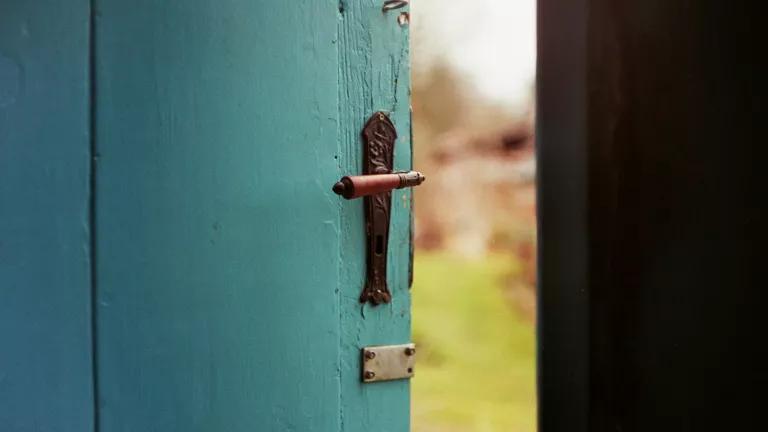Swapping Out the Last 1.5B Incandescent Bulbs in US Homes

Despite American’s rapid acceptance of energy-saving LED light bulbs, there are still about 1.5 billion sockets in the United States that contain some type of incandescent bulb, one of the least efficient products you can still buy on the planet today. Believe it or not, we are still relying on a 140-year-old technology that essentially overheats a delicate thin wire to produce light, which wastes 90 percent of the incoming energy as heat.
But it doesn’t have to be that way and we’ve created a guide to help you select the most efficient bulbs for your home, which will cut your energy bill and help avoid climate-warming pollution.
Some people keep buying incandescent bulbs that burn out every year or two because they may cost a little less upfront but consumers will miss out on the roughly $50 or more worth of utility bill savings from an energy-saving LED over the bulb’s 10-year lifetime. And that doesn’t even include the additional savings from not having to buy and replace all those extra incandescent or halogen bulbs every year or two.
While consumers have largely made the switch to LEDs for the pear-shaped bulbs used in table and floor lamps, the transition has been much slower for candle- and flame-shaped bulbs, reflector bulbs used in recessed cans and track lighting, 3-way bulbs, and the round globes used in bathroom vanities.
Given the climate crisis we are facing today, we can no longer afford to continue to buy incandescent and halogen light bulbs anymore due to all the extra energy they consume, which also leads to more carbon pollution from the power plants generating that electricity.
Fortunately, the LED bulb does everything that incandescents can do—turn on instantly, give off the same amount and quality of light, be dimmed, etc.—except waste massive amounts of electricity. LED bulbs use four to six times less energy to produce the same amount of light as an incandescent and last around ten years, avoiding the hassle of annual bulb changes. Consumers today can buy an energy-saving LED bulb from a wide variety of manufacturers in virtually any shape, light output, or conventional base type.
Although sales of the energy-wasting incandescents and halogens were due to be discontinued nationally as of January 1, the Trump Department of Energy blocked these common-sense efficiency standards from going into effect. DOE’s actions were unlawful and we expect the courts to order the agency to implement and enforce the standards in the not-too-distant future. (Note, due to a special provision of the law, incandescents and halogens can no longer be offered for sale in California after 12/31/2019 as they don’t meet the state’s minimum efficiency requirements.)
In the meantime, consumers should switch to LEDs on their own, saving the average household an additional $100 per year on its electric bill and collectively preventing millions of tons of climate-change pollution annually.
Here is simple five-step guide to buying the right LED models to replace your incandescent and halogen bulbs:
1. Get the right amount of light
Incandescents came in four common “sizes”—40, 60, 75 and 100 watts. LED light bulbs use around 6 times less energy to produce the same amount of light. Therefore, you can buy a 10-watt LED bulb and get the same amount of light as that old 60-watt incandescent produced, and so on. You should no longer buy bulbs based simply on the rated wattage, but instead the amount of light produced, expressed in lumens. This table provides a rough equivalency between the old incandescent bulbs and the new LEDs:
Note: Many manufacturers still advertise their bulbs using the conventional wattages. Expect to see terms like 60-watt equivalent, 40-watt replacement, or 17 W = 100 W, meaning this 17-watt LED is just as bright as the old 100-watt incandescent bulb you are replacing.
2. Buy the right type/shape
You need a specific type of bulb to go into your fixture. For example, you’ll want a flame- or candle-shaped bulb for your chandelier, but a round globe for the bathroom vanity. Also, most bulbs have a “regular” medium screw base, whereas others have a smaller diameter screw base called a candelabra base. And some types of reflector bulbs that go into a recessed can in your ceiling or track lighting may have a pin base. The best thing to do is to take your old bulb to the hardware store to make sure the replacement will fit.

3. Buy a dimmable bulb if that’s what you need
Many, but not all, LED bulbs are dimmable. If your bulb is connected to a dimmer switch, make sure the bulb package says “Dimmable”. Three-way LED bulbs are also available and can replace your old 30-70-100 watt or 50-100-150 watt incandescent bulbs.

4. Get the right light color
LED bulbs come in different color temperatures. Some provide a yellowish-white light referred to as warm or soft white, whereas others produce a more blueish-white light and are often marketed as daylight or cool. The warm bulbs typically list a color temperature of 2700-3000K on the package and are most like the old incandescent as they produce a similar yellowish light color. The cool bulbs, often 5000K or so, are very popular in most of Asia and what some may be most accustomed to. It’s best to try one of each to see which you prefer before swapping out your whole house.

5. Buy the bulb that distributes light where you want it
Some bulbs, like the common pear- shaped versions, are designed to deliver light up, down and sideways, like in a table, bedside or floor lamp. Other bulbs shine light in a beam like the ones used in track lights and recessed cans in our ceiling. Don’t install a regular pear-shaped bulb in a recessed can as much of the light won’t leave the fixture and reach where you want it. Similarly don’t put a reflector bulb into a table lamp as it will only shine light upward in a narrow beam and you will be disappointed.

Follow these suggestions and you’ll find bulbs you like—and save money—no matter what the Trump administration tries to do to keep you tied to energy-wasting versions.


